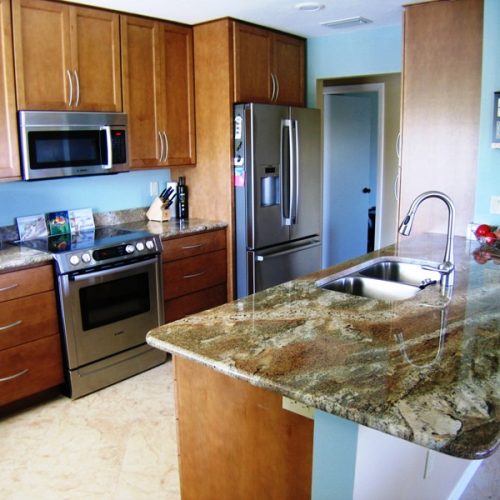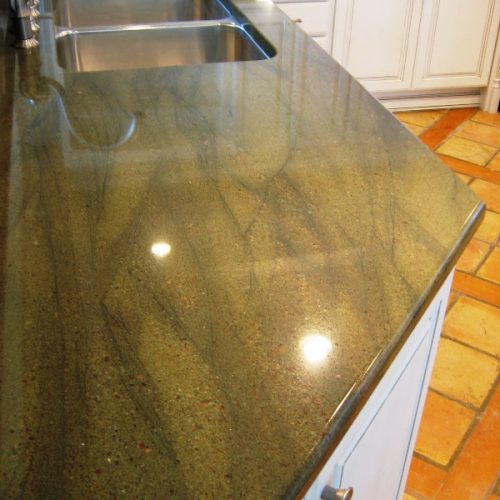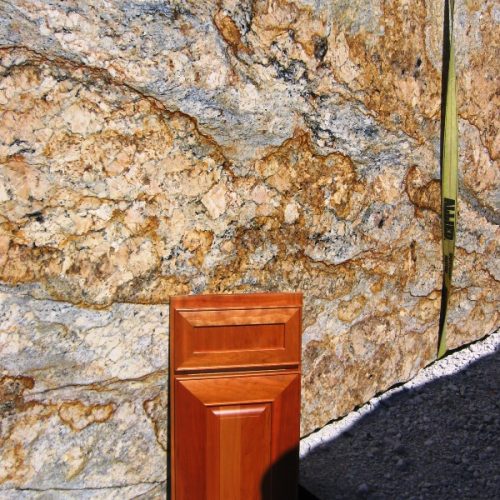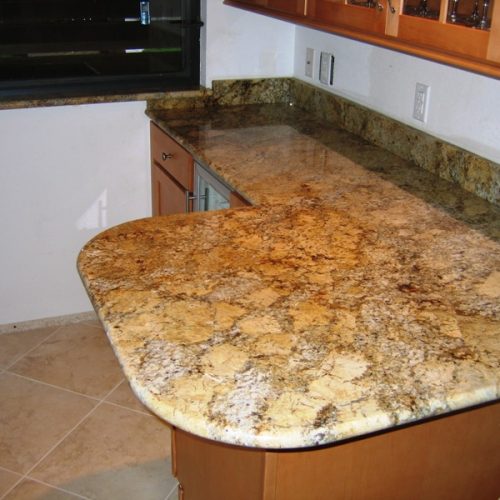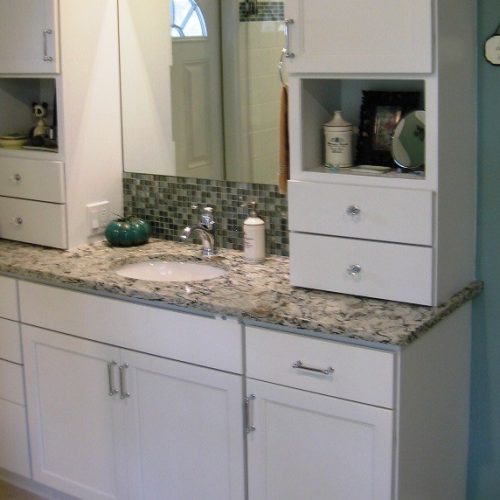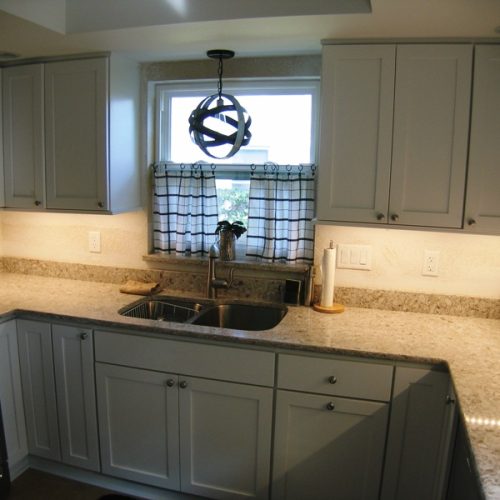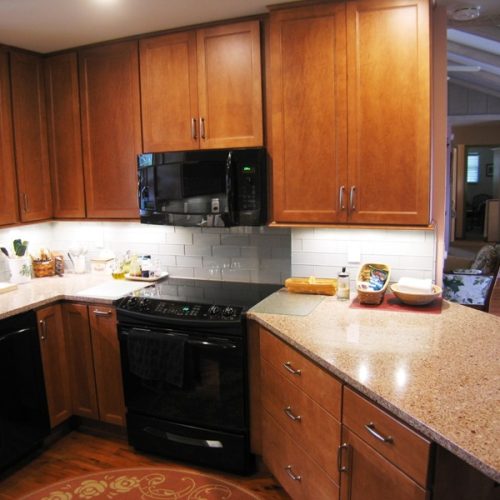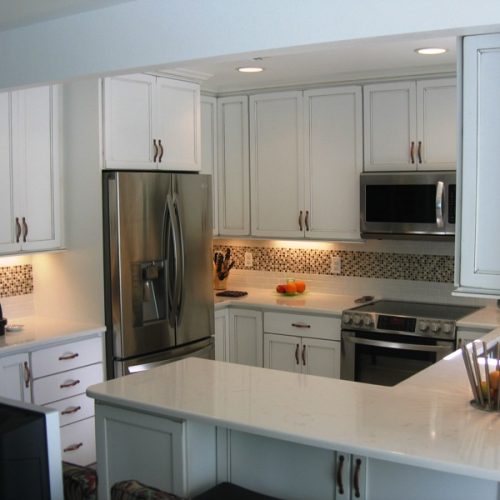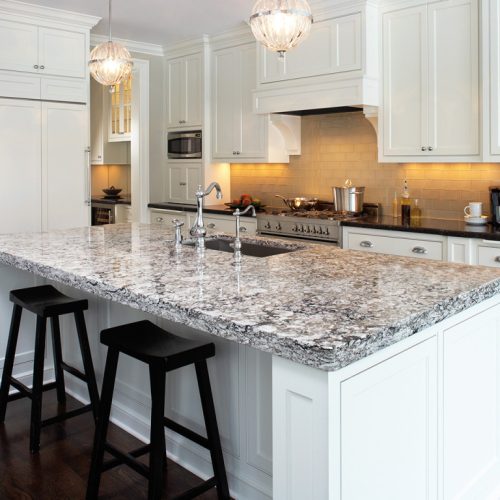Natural stone is comprised of many different materials. The most common for kitchen countertops are granite. Names like Uba Tuba, Giallo Veneziano, Blue Pearl, Black Galaxy are just a few of the many colors available in granite. Quartz composites is also sometimes referred to as engineered stone, and is exactly that: engineered stone. Common brands of quartz composites are Cambria, Caesarstone, Pompeii, Silestone, Viatera, and Zodiaq, though there are plenty more. What’s the difference, you ask? I’m here to tell you.
Composition
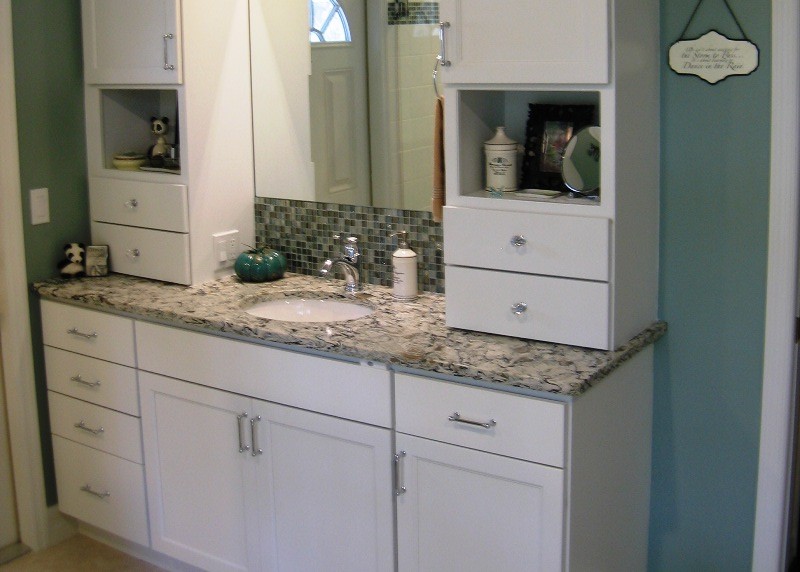
Granite is composed of many different minerals, but the majority of most granites consist of quartz and feldspar. Quartz is one of the hardest minerals known – and feldspar isn’t too far behind. In fact you have to have something equally hard (or harder) to scratch or cut it. In everyday life, those things are diamonds, rubies, sapphires, emeralds, and topaz. In short, either is pretty durable. I usually tell people that you actually have to be pretty mad or pretty unlucky to do some damage to a granite or quartz composite countertop. But it’s not a bad excuse, huh? “Please ignore the scratch in the counter. I never realized it could happen because of my diamond, ruby, and sapphire ring“.
Getting the Slabs
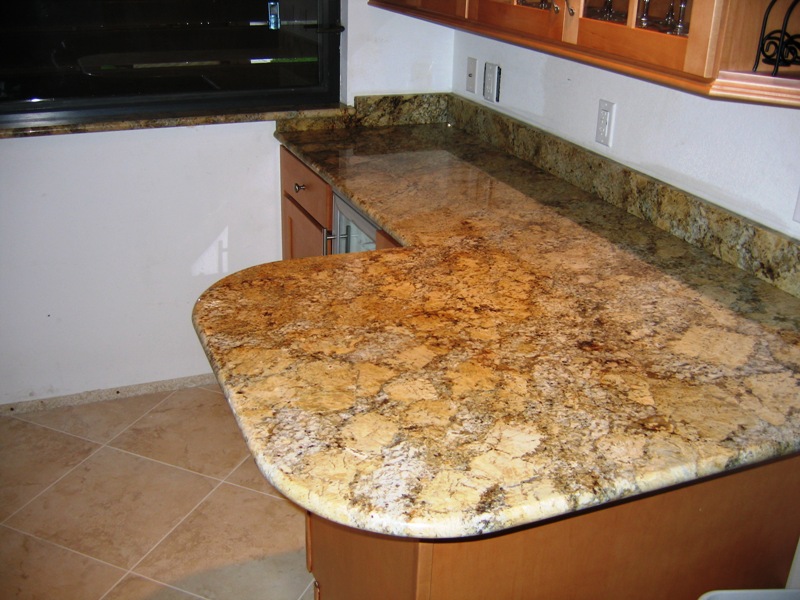
Like any stone, both options are first quarried out of the ground. Granite is pulled out in enormous cubes, then sliced like a loaf of bread to create the slabs used in countertops (Keep that sliced bread concept in mind for a little later). It is 100% natural materials retrieved out of the ground.
For quartz composites, the quartz is separated from the other minerals and crushed (or crushed, then separated. I’m not really sure which). That crushed quartz is laid out and combined with some artificial elements to create the slab. The slab consists of 93% quartz, with the other 7% being resins, coloring agents, etc. The most simplistic way to explain the production is to say that the resin is super-heated, melts, then cools into a nonporous product that, scratch-wise, is just as homeowner-friendly as granite.
Appearance
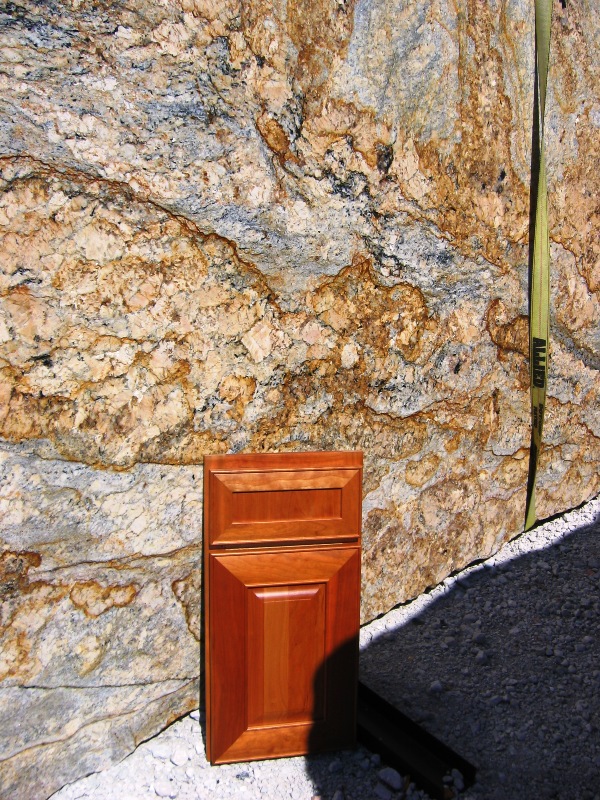
Technically, there is no ‘pattern’ to granite. Two slabs of the same type of granite can look vastly different. The look of the stone was created from the amount of volcanic activity when the earth’s crust was molten and moving. In fact, the linear effects found in some granites is referred to as ‘the movement’ of the stone. It is what can give some granites a unique or breathtaking look (it’s ‘ooo and aaahh factor’ as I call it). That volcanic movement also means that granite out of the same quarry can vary greatly in appearance when it is cut. What happens when a kitchen needs more than one slab of granite to complete the counters? That’s where the sliced bread comes in.
Have you ever made a sandwich with an irregular loaf of bread? It takes a second’s worth of thought to make sure the two slices line up properly so top and bottom slice can look somewhat even all the way around. That means you really need two pieces of bread that are next to each other in the loaf, and they need to be oriented in a particular way to make it work. Same holds true for granite. Each quarried cube is given a lot number (the loaf, if you will). Then as it is sliced, each slice is given a sequence number. If you need two pieces of granite to work together, you will have better luck using sequential pieces (say pieces 7 and 8) than you will using non-sequential pieces (like pieces 2 and 5).
In the case of quartz composite, they started out with a very uniform look or pattern. As technology has progressed, the manufacturers have begun creating random and free flowing options which more closely mimic natural stone. Sometimes lot numbers are important and sometimes they are not, it depends on the brand and finish you are selecting. But the trend in quartz composite is definitely moving away from a patterned look and towards a more organic appearance.
Sealing and Maintenance
Quartz composite is the easy one. Due to the nature of its manufacturing process, quartz composite is nonporous. Therefore it never needs to be sealed. In fact, a couple of particular brands have been approved for installation in medical settings.
Since granite is a completely natural material, it contains voids and micro-fissures throughout. For this reason, natural stone needs to be sealed periodically. At installation a standard sealer is applied. Most standard sealers will last in the neighborhood of 12 months. After that, spills and stains can happen (see my hints on getting out granite stains). Resealing is similar to waxing a car – there are pastes and liquids; you can do it yourself or hire someone to come in to do it for you. But there is an alternative: an upgrade sealer can be purchased through most stone fabricators that carries a 15-year warranty, although the 15-year sealer is not advisable on all granites, especially darker tones. Personally, I think the 15-year sealer is a good option.
Price Comparisons
Most granite suppliers break down the pricing of granite colors into 4-6 standard categories before getting into what is called exotic colors. Exotic is exactly what it sounds like. Some of these can be reasonably priced, and the cost of some can make your eyes bulge. For the most part, granite pricing is based on how common the particular color is, and is not necessarily indicative of a difference in quality (but as in everything, there are exceptions). The less expensive granites are available from quarries on several continents and have similar looks. Exotics are generally available from fewer sources, thus increasing their cost.
Quartz composite’s pricing structure will vary from brand to brand. Cambria uses a single price point for everything in their line. Others can have 5 or 6 price levels, depending on color, particulate size, and pattern. What’s the difference from Brand A to Brand B? Honestly, it’s the difference between Coke and Pepsi. One brand may have a particular look or series that isn’t available elsewhere, but quality is uniform regardless of manufacturer.
Warranties
Since granite is a natural material, you generally won’t get warranties against cracks etc. Some fabricators will add a 1-year warranty to cover fabrication issues – seams, etc., but the material is seldom covered.
Quartz composites are different. Most brands carry a warranty of 10 years to a lifetime to cover manufacturing defects. How important is the warranty? To put it into context: in over 25 years of designing projects for clients, I have had 1 instance where a stone product failed. It was quartz composite and was covered under warranty.
So which one is best for you? Do you like the oo and ah of granite – or do you like the fact that quartz composite doesn’t need to be sealed? Those are usually the deciding questions.

